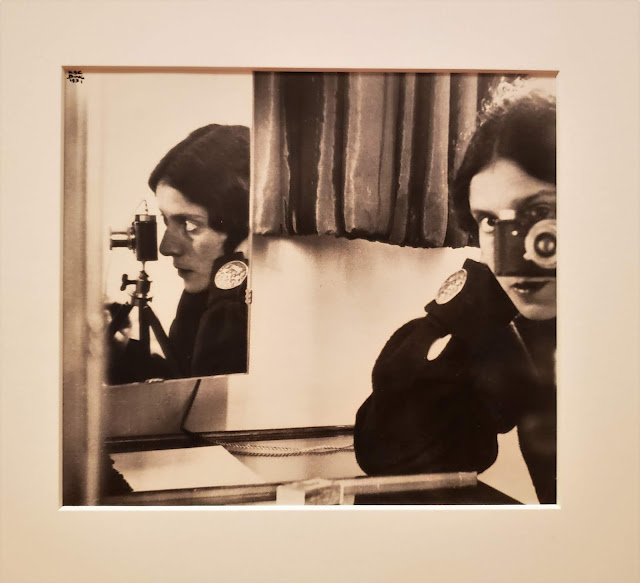The Art Gallery of Ontario is a favourite place of mine to hang out. There is always something new and interesting.
VIJA CELMINS: TO FIX THE IMAGE IN MEMORY was next as it closes August 5.
Vija Celmins: To Fix the Image in Memory is the first major North American retrospective of the celebrated artist’s work in over two decades. One of the few women to be recognized as a significant artist in 1960s Los Angeles, Celmins relocated to New York City in 1981, where she continues to live and work. Her subject matter ranges from early studio still life paintings and sculpture, to small scale drawings of ocean surfaces, spider webs and celestial skies, all meticulously rendered in extraordinary detail. This exhibition will also feature several large scale paintings, drawn from the artist’s newest body of work.
Vija Celmins is an American-Latvian contemporary artist known for her photo-based drawings and paintings of the ocean, rocks, spider webs, and stars in the night sky. “There aren't really rules for painting, but there’s certain facts and fictions about painting,” she has explained. “Part of what I do is document another surface and sort of translate it. They’re like translations, and then part of it is fiction, which is invention.” Born on October 25, 1938 in Riga, Latvia, her family fled the Soviet occupation of Latvia only to arrive in Nazi Germany. Emigrating with her family to Indianapolis after World War II, she studied at the John Herron School of Art and Design and was awarded a fellowship to Yale’s Norfolk Summer School of Art where she befriended Chuck Close and Brice Marden. Celmins’s early work was marked by the influence of Pop Art, which led her to make detailed drawings and paintings of newspaper photos. Her Untitled (Big Sea) series of laboriously drawn ocean surfaces brought her acclaim, with critics drawing comparisons to Gerhard Richter. She has been the subject of over 40 solo exhibitions since 1965, including retrospectives at The Museum of Modern Art in New York, the Tate Gallery in London, and the Los Angeles County Museum of Art. Celmins currently lives and works in New York, NY. Today, the artist’s works are held in the collections of the Art Institute of Chicago, the Whitney Museum of American Art in New York, the Hammer Museum in Los Angeles, and the Walker Art Center in Minneapolis, among others.
Honestly, these looked like real erasers! On the big side.
House #2 1965 is among Celmins’ earliest sculptural work and relates to her wartime childhood experiences. Here Celmins painted fires and plane crashes on the outside of the dollshouse. The sculpture is given additional pertinence by the knowledge that Celmins’ father was a builder of houses and the political backdrop in the 1960s included escalating protests against the Vietnam War. Discussing her early sculptural works and making specific reference to House #2 (one of her favourite pieces from the time) Celmins has said: “I have to admit that there is a psychological component to the work.”
Images of the ocean first appeared in Celmins’ work in 1968, with a series of graphite pencil on paper drawings that experimented with variations in the density and tone of graphite. Speaking of its reappearance across many works and various decades, Celmins noted: “The ocean image is one that is part of me and that I try to do every now and then with a new sensibility or process.”
Tulip Car #1 (1966) might merely depict a man dozing in his car, but it seems more the portrait of someone slumping toward the steering wheel, unconscious or dead.
I moved on to another exhibit.
Gerhard Richter is mentioned as a comparison to Celmins, above.
This piece belongs to the AGO.
My feet.
Onto another.
PHOTOGRAPHY, 1920S–1940S: WOMEN IN FOCUS
The interwar years were a period of intense social and political change and marked a new era for women in Europe and North America. Fighting for new freedoms, modeling new fashions, and interrogating issues of identity, women emerged as powerful and provocative creators. Photographs were disseminated on a mass scale through illustrated magazines and newspapers. Artists took up the camera as a dynamic tool to perceive their surroundings in new ways.
This exhibition highlights photographs from the collection of the Art Gallery of Ontario, along with key loans, and features a range of innovative photographic practices forged during these years of creative vitality. For instance, Germaine Krull produced dramatic close-ups and dizzying views of modernist architecture, and Hannah Höch, a Dadaist, created politically and socially subversive collages from magazine cut outs. Women also appear in front of the camera as compelling subjects and as modern muses for artists like Man Ray. Ilse Bing’s self-portrait demonstrates artists’ unconventional use of the camera to capture the modern experience.










































Art and lot of creative items makes me wonder which I actual like to do.
ReplyDeleteI am trying to get our small town but on an art show or exhibit, we have a lot of talent here.
Coffee is on
Some of these work better for me than others, admittedly.
ReplyDelete